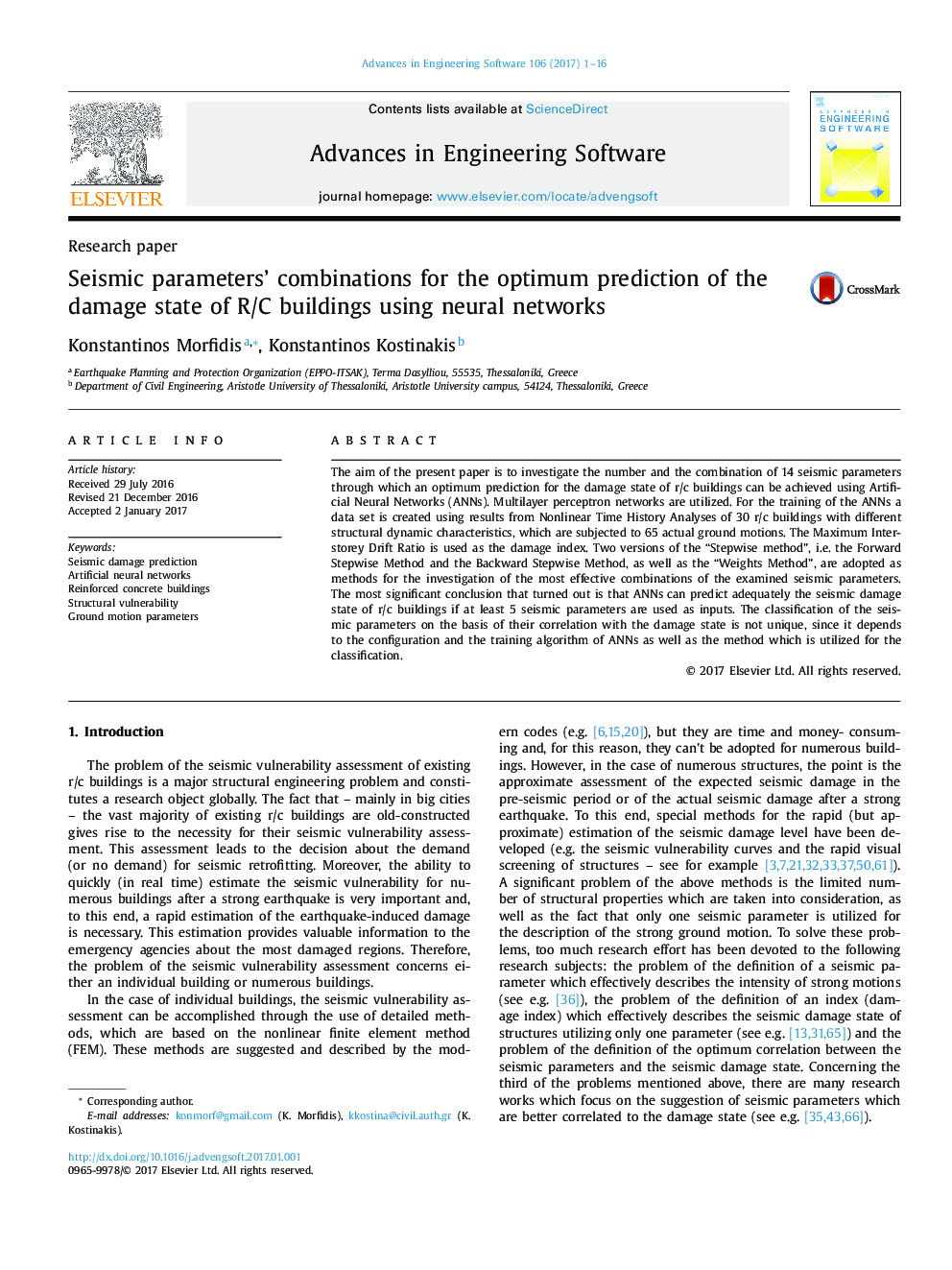| Article ID | Journal | Published Year | Pages | File Type |
|---|---|---|---|---|
| 4977949 | Advances in Engineering Software | 2017 | 16 Pages |
Abstract
The aim of the present paper is to investigate the number and the combination of 14 seismic parameters through which an optimum prediction for the damage state of r/c buildings can be achieved using Artificial Neural Networks (ANNs). Multilayer perceptron networks are utilized. For the training of the ANNs a data set is created using results from Nonlinear Time History Analyses of 30 r/c buildings with different structural dynamic characteristics, which are subjected to 65 actual ground motions. The Maximum Interstorey Drift Ratio is used as the damage index. Two versions of the “Stepwise method”, i.e. the Forward Stepwise Method and the Backward Stepwise Method, as well as the “Weights Method”, are adopted as methods for the investigation of the most effective combinations of the examined seismic parameters. The most significant conclusion that turned out is that ANNs can predict adequately the seismic damage state of r/c buildings if at least 5 seismic parameters are used as inputs. The classification of the seismic parameters on the basis of their correlation with the damage state is not unique, since it depends to the configuration and the training algorithm of ANNs as well as the method which is utilized for the classification.
Keywords
Related Topics
Physical Sciences and Engineering
Computer Science
Software
Authors
Konstantinos Morfidis, Konstantinos Kostinakis,
